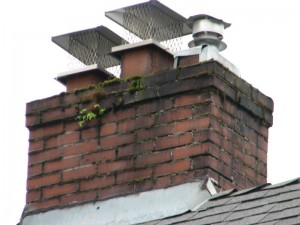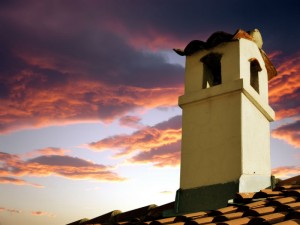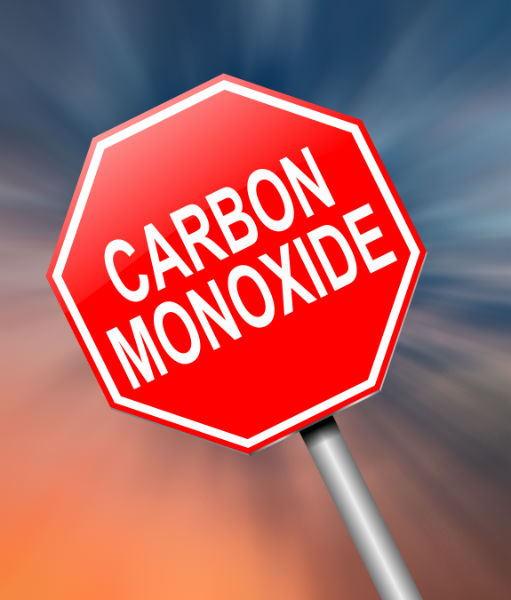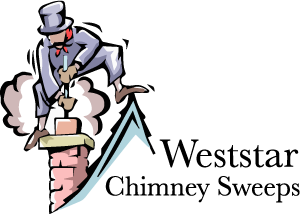Chimney Services » chimney inspection » Page 3
Our Company Blog
by Mike O'Mara | Jan 7, 2015 | Chimney Cap Choices
One of your best defenses against water penetration and animal invasions of your chimney, a chimney cap sits on top of your chimney’s opening. With several different types of chimney caps available, how do you know which cap is the right fit for the flue of your chimney? At Weststar Chimney Sweeps, we are experienced with fitting all types of chimney caps, even customized caps, and we know the importance of proper installation. We would like to tell you a bit about the different kinds of chimney caps and what you should know about selecting the right kind for your chimney to prevent damaging water leaks.

The main thing to consider when deciding which chimney cap is right for your chimney is the shape of your flue. Chimney caps come in different shapes to fit each type of flue. These shapes include:
ROUND FLUES
Whether you have a clay, masonry, or metal flue, you can find a round chimney cap that can either attach the the outside of the flue or slip inside the flue. Round chimney caps are made from an assortment of materials including copper, stainless steel, and galvanized steel. Some round flue liners require chimney caps that must be inserted inside the chimney flue, such as round flexible flue liners and round solid pack flue liners.
SQUARE AND RECTANGULAR FLUES
The most commonly shaped flue, square and rectangular chimney caps can be attached to the flue, or, if you have a chimney crown, there are chimney caps in these sizes that can attach to the crown. Made from the same metals as the round chimney caps, the Chimney Safety Institute of America (CSIA) recommends you choose a chimney cap constructed from a sturdy, durable, and rust- and corrosion-resistant material to ensure a long-lasting cap. For chimney caps that attach to a chimney crown, you will need to choose from top mounted chimney caps.
OVAL FLUES
Unless you have a custom-shaped oval chimney cap made for you by our technicians at Weststar Chimney Sweeps, you will need to look at rectangular shaped chimney caps that will cover the exterior of your flue.. When you look inside this type of cap, you can see how the corner tabs or interior ledges will accommodate oval flues.
There are other considerations other than preventing water leaks to think about when choosing a chimney cap. These include:
MESH SPARK ARRESTOR
To prevent animals from entering your chimney to take up a new residence and to keep sparks from flying out of your chimney and possibly starting a fire, your chimney cap should be equipped with wire mesh sides. Be sure the mesh openings are between ¾ to ½ inches in size to keep animals out, to contain large pieces of hot debris and ashes, and to allow toxic gases to escape.
COMBINATION OF A CHIMNEY CAP AND DAMPER
You can now find top sealing chimney caps that do double duty as a protective cap and as a damper. Perfect for new home constructions and for older chimneys in need of numerous repairs, the damper is located on the cap. When it is sealed closed, the air loss from your home is reduced by 90%. When the damper is opened, the wire mesh on the chimney cap protects your chimney from invading animals and prevents stray sparks from exiting.
Want to know more about the different types of chimney caps? Contact Weststar Chimney Sweeps today to talk to our expert staff about your many options.
by Mike O'Mara | Nov 25, 2014 | Chimney Inspections
 To become Chimney Safety Institute of America (CSIA)-certified chimney sweeps, our chimney technicians at Weststar Chimney Sweeps must pass an examination on the National Fire Prevention Association (NFPA) standard code 211, the standard for chimneys, fireplaces, vents, and solid fuel burning appliances. In this code, the NFPA developed three different levels of chimney inspections that all chimney sweep certified by the CSIA must strictly follow. Since the CSIA recommends an annual chimney sweeping and inspection, the organization also strongly suggests you should ask for the appropriate level of inspection for your chimney and venting system. To inform you of what each level involves to help you know which level to request, we would like to share with you an explanation of what happens during each chimney inspection level.
To become Chimney Safety Institute of America (CSIA)-certified chimney sweeps, our chimney technicians at Weststar Chimney Sweeps must pass an examination on the National Fire Prevention Association (NFPA) standard code 211, the standard for chimneys, fireplaces, vents, and solid fuel burning appliances. In this code, the NFPA developed three different levels of chimney inspections that all chimney sweep certified by the CSIA must strictly follow. Since the CSIA recommends an annual chimney sweeping and inspection, the organization also strongly suggests you should ask for the appropriate level of inspection for your chimney and venting system. To inform you of what each level involves to help you know which level to request, we would like to share with you an explanation of what happens during each chimney inspection level.
LEVEL 1
The simplest of the three levels of chimney inspection, ask for a Level 1 if your appliance or venting system have not changed and you are planning on using it as you normally have in the past. In this level of inspection, Weststar Chimney Sweeps will inspect all readily accessible parts of your chimney’s exterior and interior and all accessible parts of your chimney’s connection to the appliance. Checking for the soundness of structure and proper installation, our chimney inspectors will also verify your chimney is free from blockages and combustible creosote deposits.
LEVEL 2
Required when any change is made to your system, a Level 2 inspection examines changes in fuel type, changes to the size and shape of your flue, and changes to the heating appliance, such as when you have a fireplace insert installed. You must also request a Level 2 if you are selling or transferring your home and after building fires, chimney fires, earthquakes and tremors, and any weather-related event. Including everything performed in a Level 1 inspection, a Level 2 also examines the accessible parts to your chimney’s exterior and interior, including attics, crawl spaces, and basements. This level of inspection also addresses clearance from combustibles.
LEVEL 3
If a Level 1 or 2 inspection reveals a hidden hazard that cannot be evaluated without special tools to access concealed areas of your chimney or flue, Weststar Chimney Sweeps will recommend a Level 3 inspection, which is the most detailed of the three levels of inspection. When necessary, certain parts of the chimney must be removed for the evaluation to be complete. Parts that may be removed include the chimney crown or an interior wall of the chimney. This is only required when access is needed to areas that are subject to the inspection. Also, during a Level 1 or 2 inspection, if our chimney inspectors feel a serious hazard is present within your chimney or venting system, a Level 3 inspection may be required to examine the entire chimney or venting system.
Have questions about the three levels of chimney inspection? Contact Weststar Chimney Sweeps to find out more about each level.
by Mike O'Mara | Sep 30, 2014 | Chimney Maintenance, fire safety

Don’t wait another day — schedule your own chimney sweeping today!
With temperatures dropping every day, winter will be here before we know it. Weststar Chimney Sweeps knows you want to start enjoying a warm fire in your fireplace as soon as you can, but we recommend your chimney be professionally swept and inspected by one of our CSIA-certified chimney sweeps before you light that first fire. According to the National Fire Prevention Association (NFPA), at least 12,000 Americans die every year in a house fire. One of the best ways to avoid having a devastating fire at your home is to have your chimney cleaned before the winter season.begins. The Chimney Safety Institute of America (CSIA), the NFPA, and other fire prevention and safety organizations recommend you have your chimney professionally swept and inspected at least once a year. Scheduling this annual sweeping and inspection in the late summer and early fall ensures your fireplace will be safe to use in the winter. We would like to tell you why it is so essential to have your chimney cleaned before you begin using it regularly in the colder months. We would also like to share some fire safety tips from the University of Nebraska-Lincoln.
Have Your Chimney Professionally Cleaned Before Winter
Safety is the main reason you should have your chimney swept and inspected before you light your first fire of the winter season. One of the biggest causes of chimney fires is large accumulations of creosote within your chimney. Developed naturally during the condensation process when the byproducts of combustion exit your chimney, creosote is highly flammable. If you neglect scheduling a professional chimney sweeping and inspection and large amounts of creosote remain inside your chimney, a home fire can be in your near future. Weststar Chimney Sweeps will be sure all creosote will be removed when we clean your chimney. We will also inspect your entire chimney to make sure there are no essential repairs. For example, a cracked chimney liner can lead to dangerous carbon monoxide leaking into your home, which can cause illness and possible death.
Other Safety Precautions for Winter
● Place some sort of shield, such as glass fireplace doors or a mesh screen, around your fireplace to keep sparks from jumping out and igniting a fire in your home.
● Make sure no flammable items are in the area around your fireplace just in case ash, sparks, or smoke exits your fireplace into your home.
● Use dry, seasoned firewood to build your fires. This type of wood cuts down on the amount of creosote produced when burning wood. Burning wet wood actually increases and speeds up the development of creosote deposits.
● Store your firewood off the ground to keep it dry and to prevent insects from living in the wood and entering your home when you bring it inside to burn. Few insects can survive if the wood is dry.
The fall is the busiest time of year for Weststar Chimney Sweeps. Contact us today to schedule an appointment with one of our chimney sweeps now so that you do not have to wait for weeks to have your pre-winter chimney cleaning and inspection.
by Mike O'Mara | May 23, 2014 | Chimney Maintenance, fire safety
If you’re new to chimney ownership, it might surprise you when you learn not only that you need to be scheduling a professional chimney inspection each and every year, but that there are several different types of chimney inspections too.

It is vital to have your chimney inspected thoroughly at least once a year. Let our experts perform one of the three levels of inspection that is needed for your chimney.
Those different inspections are outlined as three different levels — 1, 2 and 3 — and Weststar Chimney Sweeps technicians are always happy to give you a rundown of when and why different inspections make sense for your system and your home. In the meantime, though, here are some basics to make those levels a little more clear:
Where Did These Levels Of Inspection Come From?
For a long time, the quality or thoroughness of your chimney inspection was largely left up to the individual professional doing the inspecting. While diligent, detailed chimney sweeps (like Weststar’s) have always been around, you generally just didn’t know what you’d get — a detailed peek into the state of your system, a quick glance with a flashlight and a mirror, or anything in between.
In January of 2000, the National Fire Protection Association outlined three different levels of inspection within NFPA 211, the standard by which our work — and the work of other CSIA-certified chimney technicians — is guided. This ensures that you receive a specific level of care, based on your chimney’s circumstances and needs, and that you know what to expect.
So What Should I Expect?
The Level of inspection that Weststar Chimney Sweeps technicians will recommend will be based on your specific system’s needs.
Level 1
If your system hasn’t changed — if you’re burning the same fuel in the same appliance with the same flue liner, etc. — you’ll do well with a Level 1 inspection, the least intricate (but still highly detailed) inspection. We’ll examine all of the readily accessible parts of your chimney, from the firebox up through the flue, interior to exterior, looking for structural soundness, performance issues (like obstructions or excess creosote) and damage (like flue liner cracks that could lead to a leak). After our inspection, we’ll share our detailed findings with you, and make any necessary recommendations.
Level 2
A more detailed Level 2 inspection makes the most sense in a couple of specific circumstances: when something in your system has changed, or if the property is changing hands. So if you’ve changed from wood to gas, added a new fireplace or insert, relined your flue or made other similar changes since your last inspection, Level 2 is appropriate. If you’re buying a home with a fireplace, a Level 2 inspection allows you to get the full picture of what’s about to become your responsibility — and potentially, your problem.
Level 2 inspections include that same thorough, top to bottom, in and out examination as Level 1, but we’ll also check your chimney in attics, basements and crawl spaces, look for proper clearance from combustible building materials and scan the flue using a specialized video camera that lets us get the closest look possible, and show our findings to you.
Level 3
A Level 3 inspection is really only recommended when a potential hazard is found and a closer look is needed — and that closer look can include removing building materials (like doors or drywall) that block off certain concealed areas. With these inspections, we’re leaving no stone unturned so we can be sure we’re aware of any dangerous or damaging problems that need to be addressed.
We’re always happy to talk chimneys — including inspections and other regular maintenance — with our valued clients. If you have questions, or would like to schedule your annual inspection, give Weststar Chimney Sweeps a call!
by Mike O'Mara | Apr 30, 2014 | Chimney Maintenance

You won’t know it’s there until it strikes! Avoid CO poisoning through proper chimney care and maintenance.
When you are using your fireplace, you probably give little thought to the dangers of carbon monoxide poisoning; however, the Chimney Safety Institute of America states that every year over 200 people in the United States die from carbon monoxide poisoning due to the toxic gas entering their homes due to venting problems or leaks in their heating or chimney system. Additionally, 10,000 cases of illnesses due to carbon monoxide poisoning are reported every year. Fortunately, proper maintenance of your chimney, including an annual chimney sweep and inspection from a CSIA-certified chimney sweeping company like Weststar Chimney Sweeps, can prevent any possible carbon monoxide poisoning incidents from occurring in your home.
What does carbon monoxide do to you?
Quite simply, too much carbon monoxide in your bloodstream will kill you, and low levels of exposure to carbon monoxide over a period of time can cause many health problems. Unfortunately, when carbon monoxide is in the air, the protein hemoglobin in your blood would rather latch on to carbon monoxide and ignore life-giving oxygen. Because of this, your body will replace oxygen with carbon monoxide, and this causes greater or lesser levels of your cells suffocating, depending on the duration and intensity of the exposure to carbon monoxide. Low-level exposure to carbon dioxide includes serious side effects like permanent organ and brain damage. The elderly, infants, and people with breathing issues are in more danger to carbon monoxide exposure as their immune systems are compromised. Symptoms of carbon monoxide poisoning are similar to the common cold and flu, so it can take some time to diagnose the true problem. If you continue to suffer from headaches, fatigue, or even depression, ask your doctor to check your blood levels of carbon monoxide.
How does carbon monoxide form in my chimney?
A by-product of combustion, carbon monoxide can be found in both gas and wood-burning fireplaces, stoves, and furnaces. If the combustion process is incomplete, more carbon dioxide is formed. Restricted air flow (closed fireplace doors and an unopened damper) is a cause of incomplete combustion as not enough oxygen is able to get in to burn the fuel completely.
How does carbon monoxide get into my house from my chimney?
Several factors lead to the toxic gas leaking into your home. A damaged or deteriorated flue liner allows carbon monoxide to seep through its cracks. Other factors that cause carbon monoxide to enter your home are debris clogs, soot build-up, and animal or birds nests obstructing the chimney flue.
How do I prevent carbon monoxide from entering my house?
The best prevention against carbon monoxide leaks is an annual chimney sweeping and inspection from a CSIA-certified company like Weststar Chimney Sweeps. We will ensure your venting system and flue liner are in good shape, and if not, we provide chimney repair services to fine-tune your chimney so that it works efficiently and safely.
If you have any more questions about the dangers of carbon monoxide, contact Weststar Chimney Sweeps, and our staff will be happy to answer them as well as schedule a chimney sweeping and inspection to ensure your home is carbon monoxide-free.


 To become Chimney Safety Institute of America (CSIA)-certified chimney sweeps, our chimney technicians at Weststar Chimney Sweeps must pass an examination on the National Fire Prevention Association (NFPA) standard code 211, the standard for chimneys, fireplaces, vents, and solid fuel burning appliances. In this code, the NFPA developed three different levels of chimney inspections that all chimney sweep certified by the
To become Chimney Safety Institute of America (CSIA)-certified chimney sweeps, our chimney technicians at Weststar Chimney Sweeps must pass an examination on the National Fire Prevention Association (NFPA) standard code 211, the standard for chimneys, fireplaces, vents, and solid fuel burning appliances. In this code, the NFPA developed three different levels of chimney inspections that all chimney sweep certified by the 

